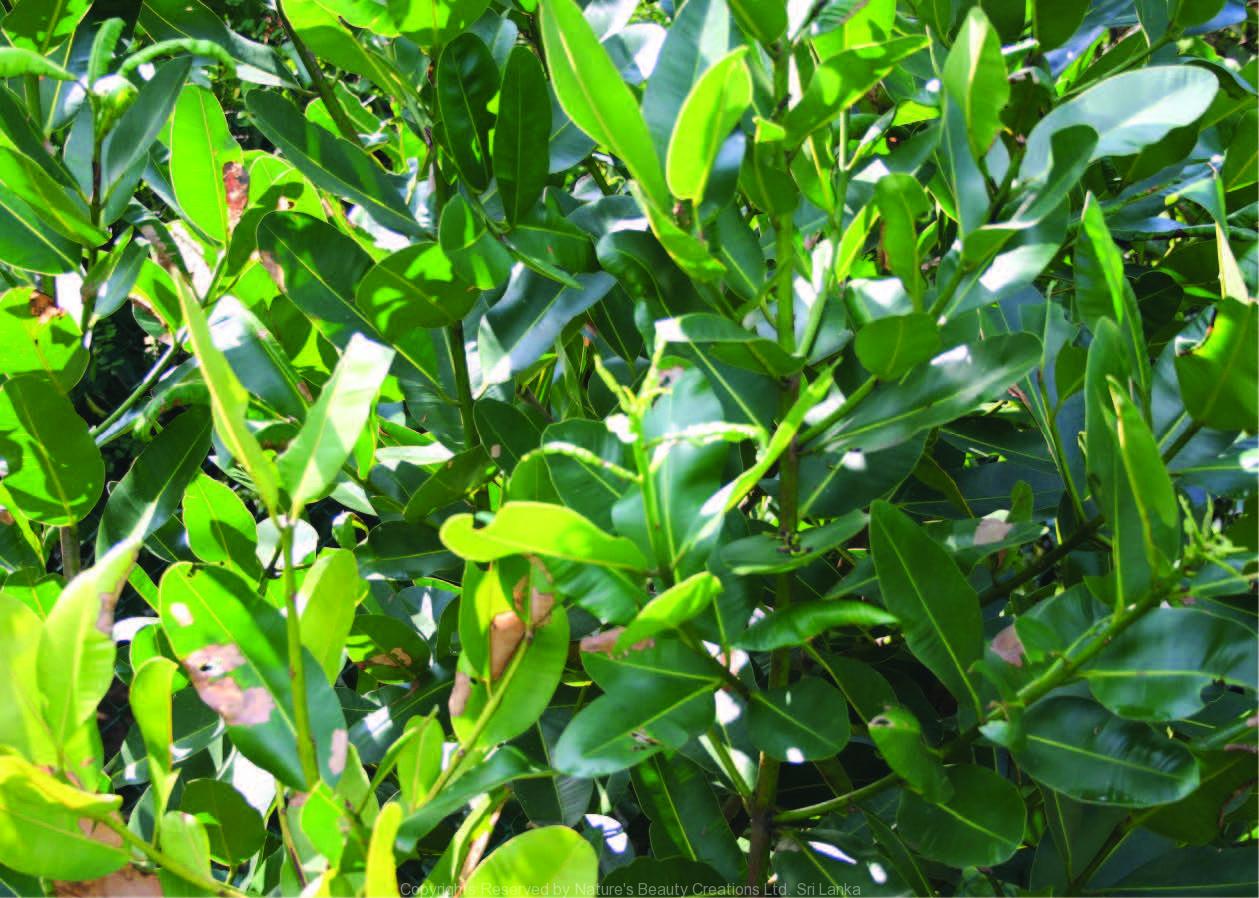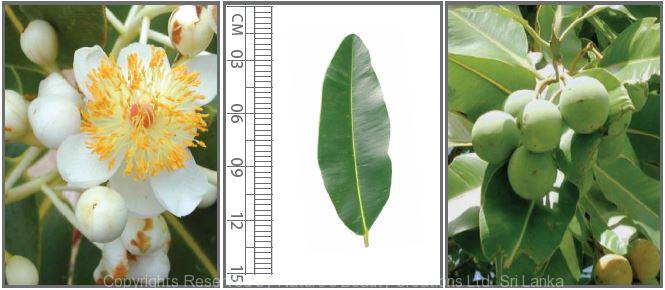

Traditional Knowledge
Useful plant parts :
Seed, bark and stamen
Uses in traditional medicine :
- Dried stamens mixed with bee honey is taken to control excess bleeding
- Seed oil extracted by traditional methods are applied for inflammation of bones, joint pains and skin diseases
- Bark rubbed with lime juice acts as an antiseptic, disinfectant, bromidrosis and expectorant
Scientific Research
Chemical constituents:
Xanthones: caloxanthones A and B from root bark; triterpenes: canophyllal, canophyllol, canophyllic acid, friedelin, calophyllic acid, inophynone and isoinophynone and cholesterol, pyranocoumarin derivatives: inocalophyllins A and B, flavonoids: calophyllolide, amentoflavone from leaves and seeds; furanoxanthones: inophinnin, inophyllin, macluraxanthone, pyranojacarebin, 2-hydroxyxanthone, 4-hydroxyxanthone, caloxanthone N, gerontoxanthone C from twigs and stem bark
Bioactivity :
Seed oil: composed of HIV reverse transcriptase inhibitors; xanthones: anti-inflammatory, central nervous system depression activity; calophyllic acid, isocalophyllic acid and amentoflavone: antidyslipidaemic, antioxidative; caloxanthone N, gerontoxanthone: cytotoxic
Clinical:
References : Ali, M. C. et al., (1999), Epimers from the leaves of Calophyllum inophyllum, Phytochemistry, 50(8), 1385-1389. Ee, G. C. et al., (2011), A new furanoxanthone from the stem bark of Calophyllum inophyllum, J Asian Nat Prod Res, 13(10), 956-60. Gopalakrishnan, C. et al, (1980), Anti-inflammatory and C.N.S. depres- sant activities of xanthones from Calophyllum inophyllum and Mesua ferrea, Indian Journal of Pharmacology, 12(3), 181-191. Iinuma, M. et al., (1994), Two xanthones from root bark of Calophyllum inophyllum, The International Journal of Plant Biochemistry, 35(2), 527-532. Govindachari, B.R. et al., (1967), Triterpenes of Calophyllum inophyllum linn, Tetrahedron, 23(4), 1901-1910. Prasad, J. et al., (2012), Antidyslipidemic and antioxidant activity of the constituents isolated from the leaves of Calophyllum inophyllum, Phytomedicine, 19(14), 1245-9. Shen, Y. C. et al., (2003), Inocalophyllins A, B and Their Methyl Esters from the Seeds of Calophyllum inophyllum, Chemical & Pharmaceutical Bulletin, 51(7), 802. Spino, C. et al., (1998), Anti-HIV coumarins from calophyllum seed oil, Bioorganic & Medicinal Chemistry Letters, 8(24), 3475-3478. Xiao, Q. et al., (2008), Cytotoxic prenylated xanthones from Calophyllum inophyllum, J Asian Nat Prod Res, 10(9-10), 993-7.
Copyrights Reserved By
Natures Beauty Creations



